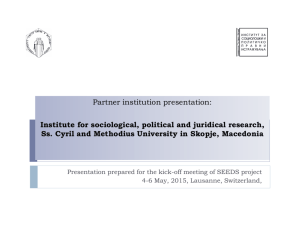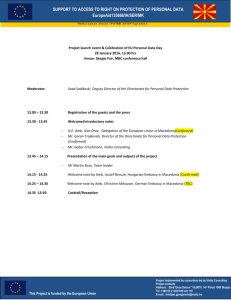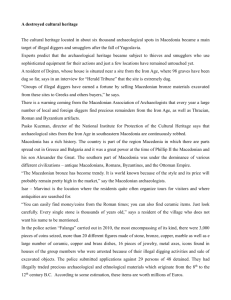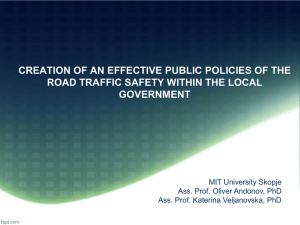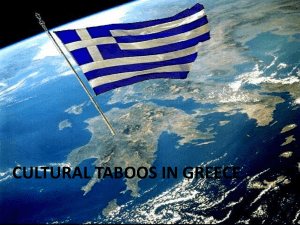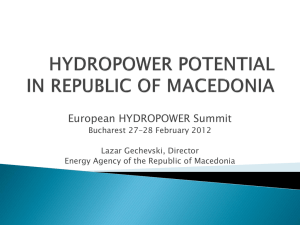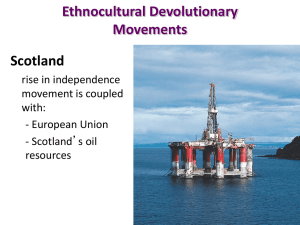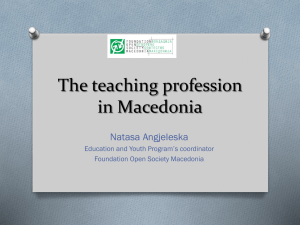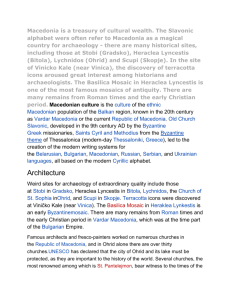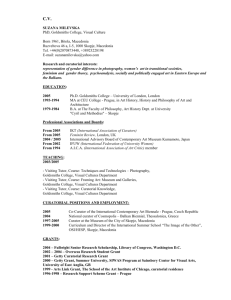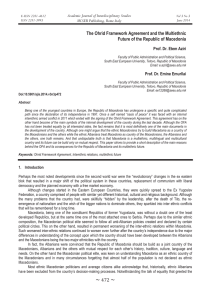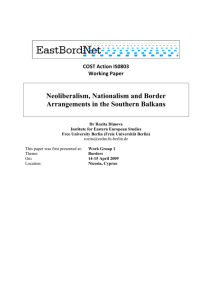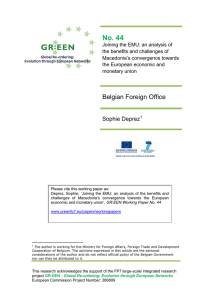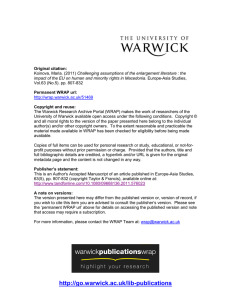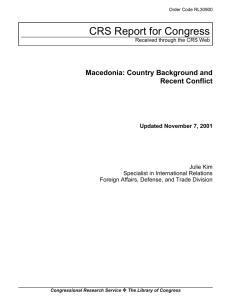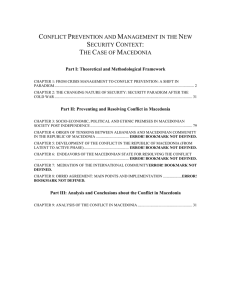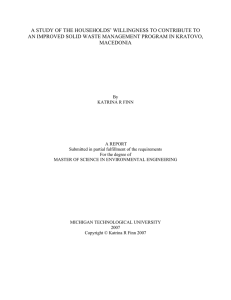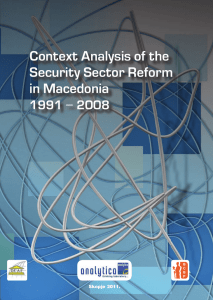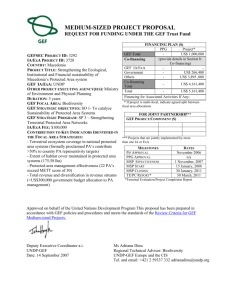Coding notes: Macedonia-Serbia `91-`96
advertisement
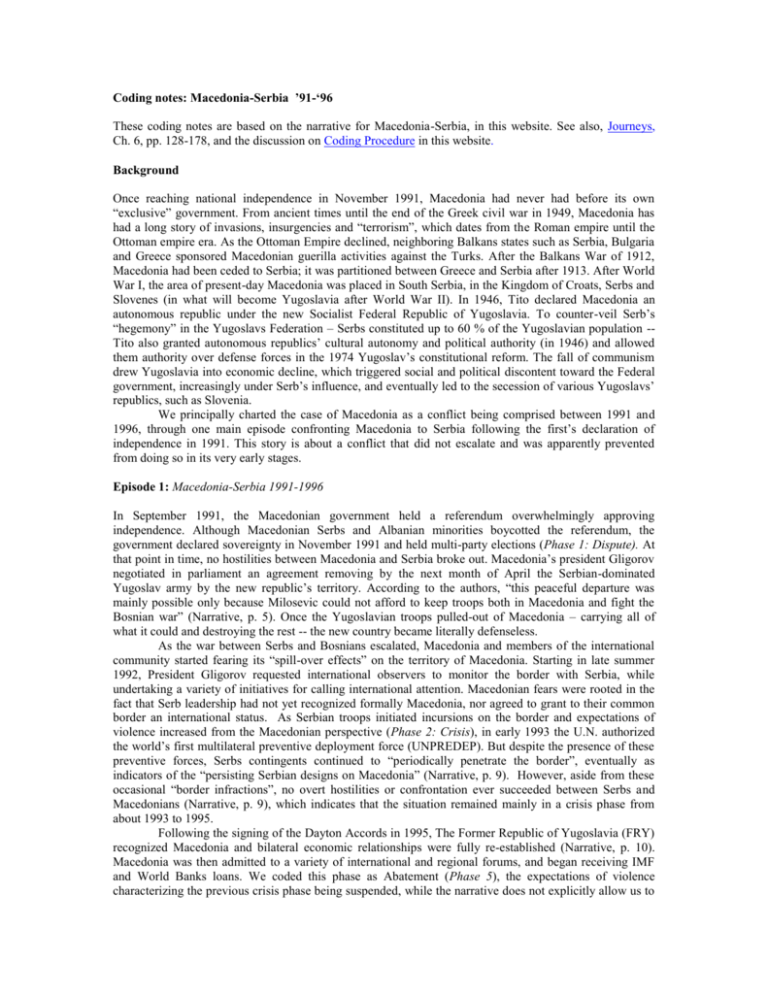
Coding notes: Macedonia-Serbia ’91-‘96 These coding notes are based on the narrative for Macedonia-Serbia, in this website. See also, Journeys, Ch. 6, pp. 128-178, and the discussion on Coding Procedure in this website. Background Once reaching national independence in November 1991, Macedonia had never had before its own “exclusive” government. From ancient times until the end of the Greek civil war in 1949, Macedonia has had a long story of invasions, insurgencies and “terrorism”, which dates from the Roman empire until the Ottoman empire era. As the Ottoman Empire declined, neighboring Balkans states such as Serbia, Bulgaria and Greece sponsored Macedonian guerilla activities against the Turks. After the Balkans War of 1912, Macedonia had been ceded to Serbia; it was partitioned between Greece and Serbia after 1913. After World War I, the area of present-day Macedonia was placed in South Serbia, in the Kingdom of Croats, Serbs and Slovenes (in what will become Yugoslavia after World War II). In 1946, Tito declared Macedonia an autonomous republic under the new Socialist Federal Republic of Yugoslavia. To counter-veil Serb’s “hegemony” in the Yugoslavs Federation – Serbs constituted up to 60 % of the Yugoslavian population -Tito also granted autonomous republics’ cultural autonomy and political authority (in 1946) and allowed them authority over defense forces in the 1974 Yugoslav’s constitutional reform. The fall of communism drew Yugoslavia into economic decline, which triggered social and political discontent toward the Federal government, increasingly under Serb’s influence, and eventually led to the secession of various Yugoslavs’ republics, such as Slovenia. We principally charted the case of Macedonia as a conflict being comprised between 1991 and 1996, through one main episode confronting Macedonia to Serbia following the first’s declaration of independence in 1991. This story is about a conflict that did not escalate and was apparently prevented from doing so in its very early stages. Episode 1: Macedonia-Serbia 1991-1996 In September 1991, the Macedonian government held a referendum overwhelmingly approving independence. Although Macedonian Serbs and Albanian minorities boycotted the referendum, the government declared sovereignty in November 1991 and held multi-party elections (Phase 1: Dispute). At that point in time, no hostilities between Macedonia and Serbia broke out. Macedonia’s president Gligorov negotiated in parliament an agreement removing by the next month of April the Serbian-dominated Yugoslav army by the new republic’s territory. According to the authors, “this peaceful departure was mainly possible only because Milosevic could not afford to keep troops both in Macedonia and fight the Bosnian war” (Narrative, p. 5). Once the Yugoslavian troops pulled-out of Macedonia – carrying all of what it could and destroying the rest -- the new country became literally defenseless. As the war between Serbs and Bosnians escalated, Macedonia and members of the international community started fearing its “spill-over effects” on the territory of Macedonia. Starting in late summer 1992, President Gligorov requested international observers to monitor the border with Serbia, while undertaking a variety of initiatives for calling international attention. Macedonian fears were rooted in the fact that Serb leadership had not yet recognized formally Macedonia, nor agreed to grant to their common border an international status. As Serbian troops initiated incursions on the border and expectations of violence increased from the Macedonian perspective (Phase 2: Crisis), in early 1993 the U.N. authorized the world’s first multilateral preventive deployment force (UNPREDEP). But despite the presence of these preventive forces, Serbs contingents continued to “periodically penetrate the border”, eventually as indicators of the “persisting Serbian designs on Macedonia” (Narrative, p. 9). However, aside from these occasional “border infractions”, no overt hostilities or confrontation ever succeeded between Serbs and Macedonians (Narrative, p. 9), which indicates that the situation remained mainly in a crisis phase from about 1993 to 1995. Following the signing of the Dayton Accords in 1995, The Former Republic of Yugoslavia (FRY) recognized Macedonia and bilateral economic relationships were fully re-established (Narrative, p. 10). Macedonia was then admitted to a variety of international and regional forums, and began receiving IMF and World Banks loans. We coded this phase as Abatement (Phase 5), the expectations of violence characterizing the previous crisis phase being suspended, while the narrative does not explicitly allow us to understand if a final Settlement (Phase 6) was or was not reached after Serbia-Macedonia’s relations’ were reestablished.
